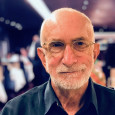There are two assets that, surprisingly, we continue to underutilize in our yearning to end AIDS by 2030. Those two groups represent humans that exist at opposite ends of the age cycle. They are, respectively, youth and older people living with HIV.
Youth are increasingly affected by HIV, with new infections in their age group on the rise. Older people with HIV are also a group rapidly increasing in number as the HIV population ages. The two groups seldom interact. That is a significant lost opportunity.
I was reminded of this fact by an interaction I recently had with LetsStopAIDS, planners of NoTimetoWait, Canada’s upcoming first Youth-HIV Leadership Conference. Conference organizers had extended an invitation to me to present a session at the conference. Of course I said, “Yes.” I like intergenerational learning.
Talking to young people not only about the realities of living with HIV but also regarding what I’ve learned from two decades of HIV advocacy work is something I’m looking forward to. The future of the HIV epidemic, after all, rests increasingly in the hands of youth—as stakeholders who have the energy and smarts to continue the work that many of us started a long time ago. They need to know our history, what worked and what didn’t. Long-term survivors, particularly those instrumental in effecting change, are well equipped to share, to coach, to pass on the torch.
As a seventy-something approaching the end of his advocacy career, I’ve seen what works. Six practical tips I want to share with youth:
- Be in the game. Passion for the work is important, wherever it comes from
- Honor the voices of people living with HIV
- Understand who does what if you want to change how things are done
- Develop key contacts and allies
- Don’t be afraid to be a lone voice; yours can turn into voices of change
- Honor diversity; leave nobody behind
I want to share with youth the successful model of how the Undetectable Equals Untransmittable (U=U) campaign changed the way we think and talk about HIV. (It’s an example that exemplifies all six of these tips.) I want to share what it feels like to experience victory in the face of great odds. I want to share how frustrating the work can be but also how rewarding. I want to share how possible it is to change the world.
I also want to share, if there is time, what it’s like to live with HIV. My experience is probably different from how young people imagine it. I want to share the disparities that drive infections in some groups and that make successful treatment, for example, more challenging in others. I want to share why youth should care about not getting HIV, and should also be concerned about others not contracting it, whether in Canada or elsewhere.
*******
There is so much I want to share. But intergenerational learning is a two-way street. I want to hear from youth. I want to learn. As a community engaged in trying to end the epidemic, we haven’t done much listening to each other. We have maybe discounted the value of young voices. The NoTimetoWait conference from LetsStopAIDS is a step in righting that wrong.
“NoTimeToWait” says the conference website “provides young Canadians with an opportunity to further their knowledge on HIV-related issues and develop the advocacy skills necessary to carry out sustainable initiatives.” That’s a goal long-term survivors may be well equipped to further.
Some of our most effective advocates in their 70s are approaching retirement from the movement, so intergenerational learning—passing the torch—needs to happen now. After all, as the conference makes clear, attendees will become key stakeholders in ending the HIV epidemic by 2030. We need to listen to them—and they need to listen to us.
Learn more about the conference here.
Register here. Registration closes November 15.








Comments
Comments